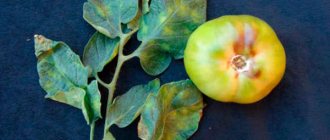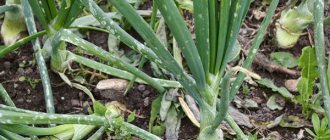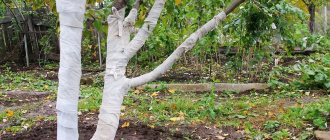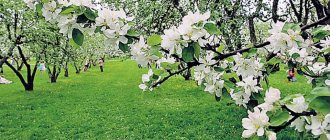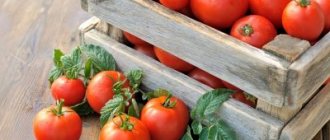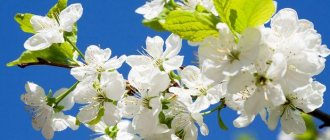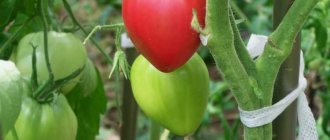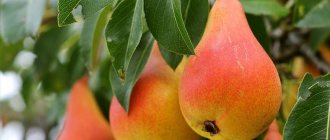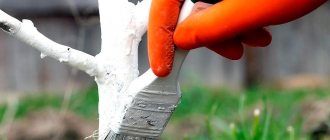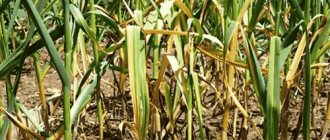Content
- Description (signs of damage and development)
- Causes of rust/brown spot in apple and pear trees
- Maliciousness (risk factors)
- Location (spread) of the disease
- Factors contributing to the development of the disease
- Methods of preventive protection and control
- a) Agrotechnical methods of protection against rust
- b) Chemical methods of protection against rust/brown spot of apple trees
- Recommended products for rust/brown spot
- Scheme for treating apple trees against rust/brown spot
- As a conclusion
Rust, brown spot/phyllostictosis of apple trees and other pome crops are microbiological (parasitic) plant diseases and require the immediate adoption of appropriate control and prevention measures.
The material describes the external signs and causes of the disease, discusses risk factors and methods of preventive protection and control. Recommendations for treatment schemes and selection of drugs are given.
Description (signs of damage and development)
The peak development of the disease occurs in the last month of spring or the first month of summer, when leaves rapidly bloom and develop on trees. By mid-summer, a strong progression of the disease is noticeable. In the northern and northwestern regions, the onset of symptoms occurs much later.
Dark yellow, brown, dark brown or grayish spots, round or angular, appear on the leaves. First, small yellow-green spots appear on the surface of the leaf plate, then they cover the entire leaf and darken, acquiring a rich red color. The size of the spots is from 5 mm to 8 mm in diameter.
Small black dots are visible on them - fungal pycnidia. Pycnidia is a characteristic symptom of the disease. Black pycnidia with colorless unicellular pycnospores differ in shape and size depending on the type of fungus.
The affected tissue dies, the epidermis peels off in the form of a thin transparent film. The fungus affects not only leaves, but also shoots, flower buds, and ovaries. At an advanced stage, the infection spreads to the trunk bark.
The nature of damage to leaves by brown spot during the period of growth of spots and their browning is very similar to burns, so their appearance is mistaken for damage by pesticides in high concentrations. However, the cause of the disease is different.
Why is juniper dangerous for an apple orchard?
Not many gardeners know about the danger juniper bushes pose to apple trees. It is in them that rust pathogens arise and persist. The spores of this fungus are carried by the wind or on the legs of an insect to apple trees. In winter, rust is found in juniper needles, and in the spring it comes to life and attacks the apple tree again.
In order to interrupt this process and not be left not only without a harvest, but also without the entire garden, you should either get rid of the juniper or transplant it from the apple trees at a great distance. Young shoots are especially susceptible to the influence of the fungus.
If you do not want to replant conifers, you should inspect them for the presence of pathogens. They are characterized by the presence of a brown-rusty color on the needles. In this case, you should fight the disease.
For this:
- trim conifers;
- dig the ground deeply and pour boiling water on it;
- treat with fungicides;
- spray trees and soil every spring;
- Carry out regular care for juniper.
However, even despite the complete destruction of coniferous bushes, rust may remain. Its spores can travel distances of more than 50 km. The best way out is timely tree care.
Causes of rust/brown spot in apple and pear trees
The cause of the disease is a fungal infection. The causative agent is a parasitic imperfect fungus of the genus Phyllosticta. The most commonly isolated species on apple trees is Phyllosticta mali Pr. et Del., Phyllosticta briardi Sacc. On pear and apple trees – Phyllosticta pirina Sacc. On quince – Phyllosticta cedoniae Sacc.
Brown spot (phyllostictosis) of apple trees
They form spots characteristic of a particular type of fungus:
- Phyllosticta mali Pr. et Del - affects the leaves of the apple tree, forms small round spots, first brownish, later gray with a dark brown border.;
- Phyllosticta briardi Sacc. – affects apple tree leaves, forms light yellow round or somewhat angular spots, without a border, up to 5 mm in diameter;
- Phyllosticta pirina Sacc. – affects pear leaves, is less common on apple trees, forms round or irregularly shaped spots that merge with each other.;
- Phyllosticta cedoniae Sacc. – affects quince leaves, forms round or irregularly shaped brown spots with a dark brown border.
Similarities with other diseases
Black cancer can be confused with other diseases that have similar symptoms
In order not to be mistaken when diagnosing the disease and to choose the right treatment method, it is important to know the main differences between these ailments:
- Cytosporosis is the appearance of gray spots on the bark that do not subsequently turn black and do not resemble charring. The bark does not peel off, but due to a change in structure it takes on a worn-out appearance.
- Common cancer is the formation of nodules with dark red bumps on the surface of the bark.
- Moniliosis is the acquisition of black fruits with a blue tint.
Often, at the same time as black cancer, other infections also affect the apple tree.
Location (spread) of the disease
Rust/brown spot is a widespread disease of pome fruit crops. The disease poses the greatest danger to southern fruit growing zones. In the north and north-west of Russia and the Baltic countries, the presence of the pathogen is constantly recorded, but it does not develop significantly.
Rust on apple and pear leaves
Rust/brown spot of apple, pear, etc. is widespread in almost all horticultural areas. However, the disease manifests itself periodically, and mainly in patches.
Factors contributing to the development of the disease
There are several reasons for the appearance and development of the disease:
a) Thickened and planted. Plants in abandoned and weed-filled areas often “rust” as well. The pathogens that cause the disease overwinter in the form of pycnidia on fallen leaves.
b) Favorable climatic conditions include high humidity and high temperatures. Warm, rainy weather favors the development of infection. Under conditions of high humidity, the pycnidia swell and release pycnospores, which leave the site of maturation as a ribbon-like, wriggling mucous mass. Individual pycnospores are carried by wind, rain and insects, land on leaves, germinate and form new sites of infection.
c) Planting apple trees and other pome crops next to conifers. In particular, with juniper - this plant is a carrier of a fungal infection, and, accordingly, its carrier. Fungal spores are carried by the wind to fruit crops
d) Often the disease develops against the background of necrotic lesions caused by various reasons, including the improper use of pesticides.
Brown spotting on the leaves of fruit and pome crops
Methods of preventive protection and control
There are agrotechnical and chemical methods of protection.
a) Agrotechnical methods of protection against rust
For preventive protection and minimizing the spread of infection, you should:
- use healthy planting material;
- promptly remove dead trees;
- promptly remove and destroy fallen leaves;
- do not thicken the plantings, carry out timely pruning of branches;
- apply mineral fertilizers correctly;
- plant plants away from coniferous crops, etc.
b) Chemical methods of protection against rust/brown spot of apple trees
Chemical methods of protection include spraying plants with fungicides during the growing season. To prevent and protect against rust, systemic contact fungicides of the group of strobilurins and triazoles, as well as preparations based on copper and sulfur, are used.
| MORE DETAILS: “FUNGICIDES - SUMMARY TABLE of drugs used (by chemical classes and active substance)” |
Recommended products for rust/brown spot
a) BASED ON COPPER. The traditional copper-containing agent is Bordeaux mixture (1%). Other modern drugs are also used (“Blue-Bordo”, “Abiga-Pik”, “Ordan”, “HOM”, “Oxychom”, “Kuproksat”, “Kuprolux”, etc.). Treatments with these drugs can be preventive and therapeutic.
b) SULFUR BASED. (the drug “Tiovit Jet” is an analogue of colloidal sulfur). The effect occurs upon contact with infection. It can be processed at any stage of the growing season, except for the flowering period.
c) SYSTEMIC-CONTACT FUNGICIDES. These are the main assistants in the fight against rust. In addition, these drugs give a positive effect in the treatment of concomitant diseases of the apple tree - scab and powdery mildew.
Recommended drugs : “Strobi”, “Topaz”, “Poliram”, “Tsineba”, “Vectra”, “Zato”, “Medea”, “Tersel”, etc. For each specific drug, work regulations (dosages, waiting times, frequency treatments) must be strictly followed according to the instructions for use.
d) BIOLOGICAL PRODUCTS . The use of biological products to protect plants from pests and diseases is a modern trend in crop production. Spraying can be carried out at any stage of growth and development - right up to harvesting.
Recommended drugs: “Alirin-B”, “Trichodermin”, “Gaupsin”, “Gamair”, “Planriz”, “PhytoDoctor”, and of course the leader in this field - “Fitosporin-M”. These are universal drugs that provide protection against a complex of fungal infections, and, for example, the bactericide “Gamair” successfully suppresses pathogens of bacterial and fungal diseases.
Prevention
Rust is a rather dangerous disease of the apple tree, which leads to a decrease in yield, weakening of the tree and a slowdown in the rate of development. It is not always possible to cope with it - in some cases it is necessary to cut down the affected trees to prevent further spread of the infection. Therefore, experienced gardeners recommend preventing the disease using the following prevention methods:
- Carry out sanitary pruning regularly.
- In the fall, dig up the tree trunk circle and water it with a solution of any fungicide.
- Remove leaves and branches in the fall and burn them completely.
- Maintain adequate watering, especially in rainy summers.
- Do not forget about phosphorus-potassium fertilizing, especially during flowering and ovary formation.
- Thin out the crown.
- When planting, maintain a minimum distance between trees (4 meters).
- Several times a season, foliar spray the leaves with a solution of potassium monophosphate (30 g per 10 l).
- Remove root growth.
Scheme for treating apple trees against rust/brown spot
A number of fungicide treatment regimens are used. Treatments are carried out in three stages - before or during bud break, after flowering and during fruiting. At stages 2 and 3, multiple treatments are allowed, depending on the nature and extent of damage. Treatments should not be carried out in hot weather, because... trees may get burned.
Here is a treatment scheme that I personally use in my garden:
a) The FIRST preventive treatment is carried out at the beginning of the growing season - the crown is sprayed with Bordeaux mixture (1 or 2%).
b) SECOND treatment - during the budding phase and after the tree has flowered, it is treated with Bordeaux mixture, but in a lower concentration (1%), or with other copper-containing preparations - “HOM”, “Ordan”, “Oxychom”, “Kuprolux”, "Abiga Peak". To achieve the desired therapeutic effect, some gardeners carry out another control irrigation after 7-14 days with the same copper-containing preparations or sulfur-based preparations.
c) FINAL (main, regular) processing is carried out during the period when the apples are being filled. This treatment may be preventative, or when signs of disease are noticed. The most common fungicide for these treatments is Topaz. Moreover, I know that “Topaz” can be used three times, at all stages - at the stage of opening vegetative buds, after flowering and during the fruiting period. For these treatments, other fungicides are also used, for example, “Zineb”, “Bayleton” or “Skor”. It is advisable to carry out treatments by alternating fungicides from different chemical groups and with different active ingredients.
How to cure wood from rust stains.
To rid wood of rust stains, it is important to carry out all activities in combination with treatments and preventive measures. If you can find and destroy the source of the disease, then you will be able to protect your area from this scourge for a long time. All actions related to the fight against the disease should include several areas, which we will consider below. Health measures.
It is the weaker trees that are most often damaged by various diseases. To improve the tree’s immunity it is very important:
- Plant fruit trees sparsely.
- Water trees correctly.
- Apply fertilizers correctly and on time.
- Care for the plant and carry out sanitary treatment.
- To plant, choose a healthy seedling.
If you plant trees too densely, this can become a provoking factor for the development and spread of the disease. Also, the fungus develops in places where there is high humidity, which is why there is no need to overdo it with watering. If it rains very often, the tree’s risk of getting sick increases significantly. In order to begin the fight against the disease as early as possible, it is necessary to inspect the tree every day. The apple tree needs timely application of fertilizers. To do this, it is necessary to reduce the application of nitrogen fertilizers, and, on the contrary, increase the application of phosphorus and potassium. In early autumn and after you harvest, it is very important not to forget about sanitary pruning of the tree. Shoots and those areas of bark that have been damaged by rust must be removed, and the sections must be thoroughly cleaned. It is necessary to treat the affected areas using a solution of copper sulfate (4-5%). Then treat with garden putty. In spring and autumn, tree trunks need to be whitened. To prevent rust, you can add preparations containing copper to the whitewash, as well as an adhesive, or use green soap. Also, do not forget to carefully inspect young seedlings of both apple and juniper trees, since they can most often act as carriers of the fungus.
